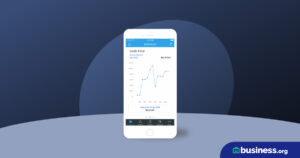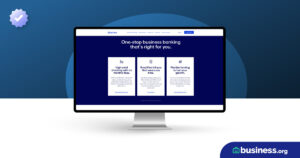💸 See if your business qualifies for a tax credit worth up to $26k per employee. 📞 Call Now: 855-979-9597
Will SBA Loans Be Forgiven?: PPP Loan Forgiveness Explained
We are committed to sharing unbiased reviews. Some of the links on our site are from our partners who compensate us. Read our editorial guidelines and advertising disclosure.
If you’re a business owner with an SBA loan (a loan backed by the US Small Business Administration), you’ve probably heard a lot of talk about loan forgiveness lately. And sure enough, many SBA loans will be forgiven! But as with most things loan-related, the actual forgiveness process can be confusing and annoying.
That’s why we’re here to clear things up. We’ll explain what counts as a forgivable loan (mostly just PPP loans, as a heads-up), how to qualify for forgiveness, and how to get the loan forgiveness process going.
Let’s get your loan funds forgiven.
Loan forgiveness 101
Some SBA loans can be (and will be) forgiven―not all, though. So let’s break down exactly which types qualify for SBA loan forgiveness.
SBA loans that qualify for loan forgiveness
Two types of SBA loans qualify for at least partial loan forgiveness:
PPP loans, or loans made through the Paycheck Protection Program, can be fully forgiven. These are the types of loans that most people mean when they talk about SBA loan forgiveness. We’ll cover the full forgiveness process in just a minute.
EIDL loans, or Economic Injury Disaster Loans, can be partially forgiven. If you got an EIDL grant, EIDL advance or targeted EIDL advance as part of your disaster loan, you don’t have to repay that amount (up to $10,000). Even better, you don’t have to do anything to get that amount forgiven―it’s automatic. You still have to repay the rest of your EIDL loan though.
SBA loans that don’t qualify for loan forgiveness
PPP loans and EIDL loans are just two of the many types of SBA loans out there. And unfortunately, the other kinds of SBA loans don’t qualify for loan forgiveness. That includes SBA financing options like these:
- SBA 7(a) loans
- SBA 504 loans
- SBA microloans
- SBA disaster loans (outside of EIDL advances and grants)
If you’ve got one of these SBA loan types, you have to repay your loan. (Sorry.)
By signing up I agree to the Terms of Use.
PPP loan forgiveness
As you can see, PPP loans are the only types of SBA loan that can be forgiven in full―and the only type that requires you to do something to get that loan forgiveness.
With that in mind, let’s talk more about how PPP loan forgiveness actually works.
PPP borrower forgiveness was originally outlined in the March 2020 CARES Act (Coronavirus Aid, Relief, and Economic Security Act), but Congress has updated the rules in several later acts.
Qualifying for loan forgiveness
To qualify for PPP loan forgiveness, you obviously need to have received a PPP loan. But just as importantly, you need to have used your loan in specified ways.
As your lender should have told you, your PPP loan came with a covered period, which was basically a short amount of time when you could use your PPP loan in ways that qualify you for loan forgiveness.
Depending on when you got your PPP loan, your covered period could be between 8 and 24 weeks long. (The CARES Act set it at 8 weeks, but later acts revised the length to up to 24 weeks.) Regardless of the length, your period started when your lender disbursed your loan (gave you the PPP loan proceeds).
You qualify for loan forgiveness if, during that covered period, you met the following conditions:
- Employee levels stayed the same
- Employee compensation levels stayed the same
- You spent the loan money on eligible expenses
- You spent at least 60% of your loan on payroll expenses
Note that these rules apply to both First Draw PPP loans and Second Draw PPP loans.
If you didn’t perfectly meet those conditions, don’t give up just yet. Even if you don’t qualify for complete forgiveness of your loan proceeds, you may qualify for partial forgiveness. And a loan forgiveness reduction is better than no forgiveness at all.
Now, to actually get your loan forgiven, you can’t just meet these conditions―you need to go through the forgiveness process by submitting an application.
Submitting your loan forgiveness application
You can submit your PPP loan forgiveness application any time after you’ve spent your PPP loan proceeds (or at least all the loan proceeds you want forgiven).
It’s okay, though, if you can’t get to your loan forgiveness application ASAP. You have until your loan maturity date (either two years or five years after disbursement, depending on when you got your loan) to complete the forgiveness process.
Just keep in mind that loan payments start 10 months after your loan disbursement. So if you don’t want to pay anything, get your PPP loan forgiveness application in before then.
Here’s how.
1. Get the right PPP loan forgiveness application
You want to make sure you’re using the right loan application, so ask your PPP lender for its application.
Some lenders use standardized SBA forms (like form 3508, for example), but other lenders will have their own forgiveness forms. And even if your PPP lender uses SBA forms, the SBA has several different forgiveness applications. So if you don’t want to waste any time, ask your lender for clarification before you start filling out a loan application.
Regardless of the specific application you end up with, it will ask your details about your business, your PPP loan, and how you used the funds. You’ll have to sign some statements saying that you used your PPP loan in specific ways (the qualifications we talked about above).
You may also fill out a calculator form that asks you to list specific amounts for payments and helps you do the math to figure out loan forgiveness reduction.
2. Gather all relevant documents
Once you’ve got your form filled out, you need to supplement it with supporting documentation―basically any records that prove you used your PPP loan the way you said you did.
For payroll expenses, these documents may include the following:
- Bank statements
- Payroll reports
- Payroll tax filings
- State business and individual wage reporting
- Receipts or account statements showing insurance retirement contributions
And for other non-payroll costs, you may need documents like these:
- Business mortgage amortization schedule and payment receipts
- Business mortgage account statements
- Business lease agreements and payment receipts
- Business utility invoices and receipts or account statements
No worries if you don’t have the originals―scanned copies will work just fine.
And again, this is a great point to talk with your lender to make sure you have the documents it wants to see.
3. Submit your loan forgiveness application to your lender
When your loan application is filled out and you’ve got all your documents attached, you’re ready to submit the application.
With any luck, this part of the forgiveness process will go quickly and smoothly, and you’ll have your loan forgiven in no time.
You may encounter some road bumps though. Don’t panic if you do―just stay in touch with your PPP lender and provide it with any additional details or documents it needs. Your lender should be able to guide you through the end of the forgiveness process.

Browse hundreds of loan options, custom-tailored to your business and budget needs, from a single, simple platform.
Loan forgiveness FAQ
Yes, the SBA has already forgiven many PPP loans. In fact, as of February 2021, it had forgiven over 30% of 2020 PPP loans.1
To qualify for SBA loan forgiveness, you need to have used your PPP funds on eligible expenses (at least 60% of those expenses should go to payroll, though the rest can go to eligible non-payroll costs). You also need to have maintained staffing and salary levels during your loan’s covered period.
If you meet those qualifications, you can submit an application for SBA loan forgiveness.
Forgiven SBA loan funds won’t be taxed at a federal level, but they may be taxed at a state level―it just depends on your state.
You can find out how your state will tax (or not) SBA loan forgiveness with the Tax Foundation’s handy map.
The takeaway
While not all SBA loans can be forgiven, PPP loans can be forgiven in full―so long as you meet the appropriate qualifications and submit a loan forgiveness application.
As you go through the forgiveness process, make sure you stay in close communication with your lender. They’ll help you find the right SBA form, get the right documents together, and ultimately get your PPP loan forgiven.
Good luck with your application!
Interested in getting another SBA loan after your PPP loan? Learn more about the types of SBA business loans available to you.
Disclaimer
At Business.org, our research is meant to offer general product and service recommendations. We don't guarantee that our suggestions will work best for each individual or business, so consider your unique needs when choosing products and services.
Sources
- American Banker, “Bankers Plead for Answers from SBA on Forgiving Big PPP Loans.” February 19, 2021. Accessed April 13, 2021.




